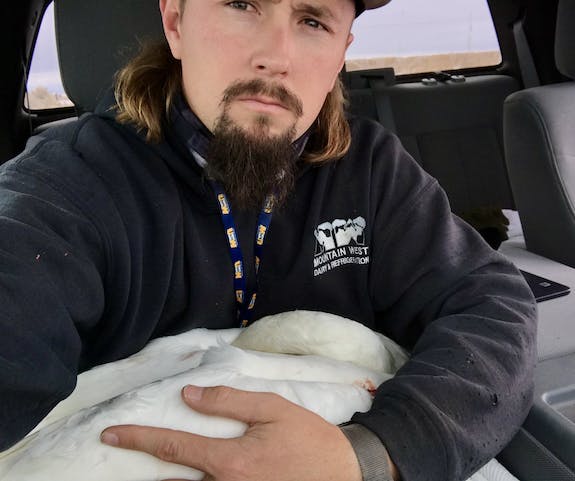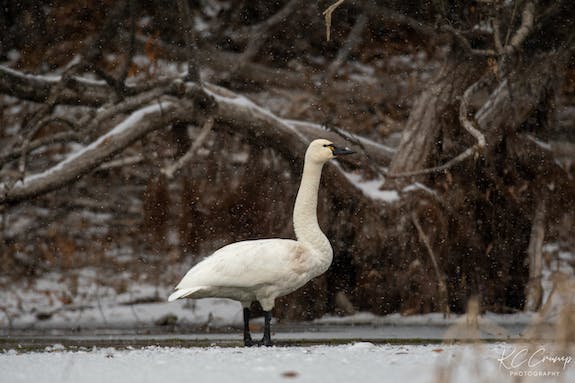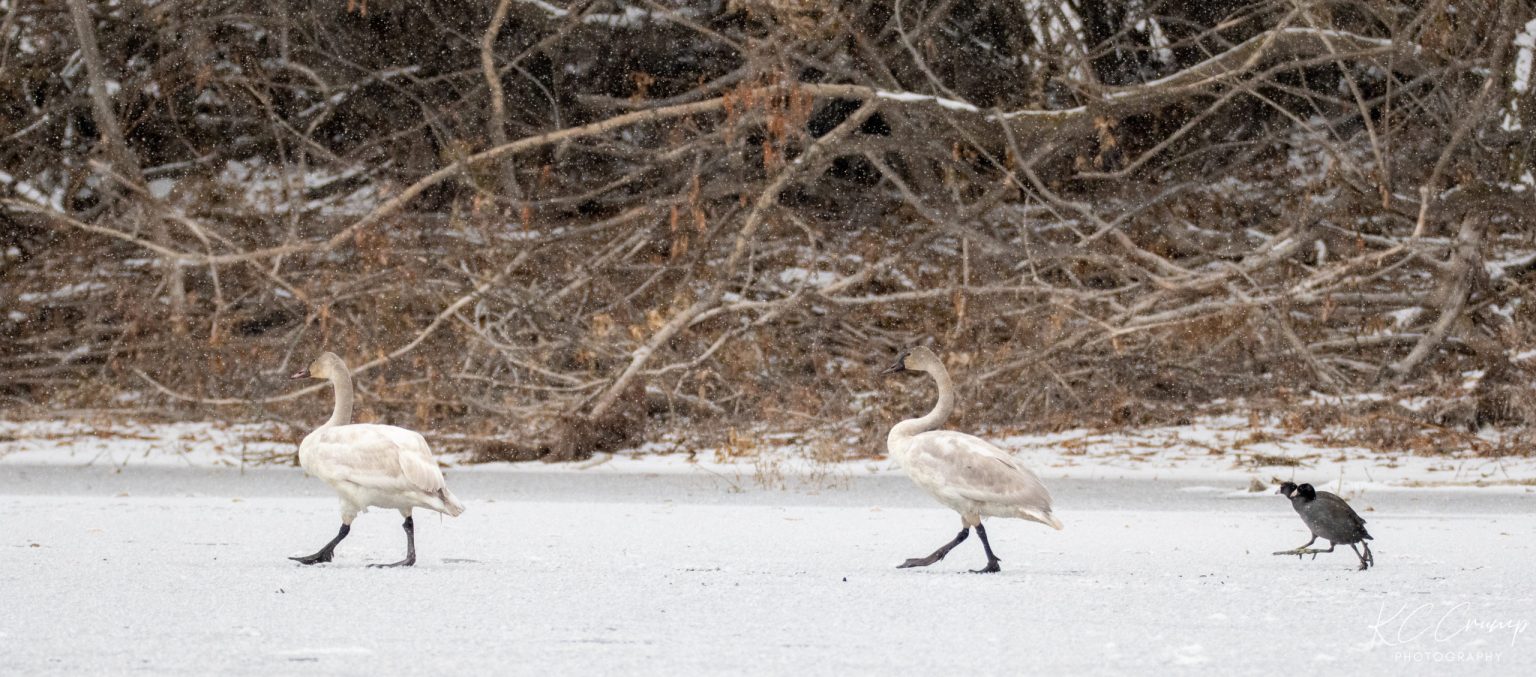When he went to work early the morning of Nov. 11, little did KC Crump realize that in a matter of hours he would be working up a sweat chasing a wild, potentially injured tundra swan through the sagebrush.

It was 5 degrees Fahrenheit around 8 a.m. when Crump, a laborer for Idaho National Laboratory, arrived at a facility on the lab’s desert site, the Specific Manufacturing Capability, to remove some of the new snow that had fallen the night before. As they walked across the parking lot toward the SMC cafeteria, Crump and his co-worker Ricky Hernandez noticed some strange tracks. Circular and about five inches in diameter, they first thought the tracks might have been left by a moose. But when they looked over to the northwest corner of the fence, they saw a white swan on the ground with some blood on its wing.
“It looked as if he had crashed into the fence,” Crump said. Not knowing what to do, and certainly not wanting to disturb a wounded wild animal, he called his higher-ups to ask for advice, eventually reaching James Winter at INL’s Central Facilities Area.
At that point, Crump didn’t know there was actually a second injured swan inside the SMC fence. Scott Lee, INL’s environmental monitoring manager, received separate calls at about the same time. He notified the U.S. Department of Energy Idaho Operations Office and then tried to engage with the Idaho Department of Fish & Game, but because of the Veterans Day holiday this proved difficult. He then called the Butte County Sheriff to get the on-duty Fish & Game officer.

Little did Lee know that Crump, an outdoor enthusiast and conservationist, happened to be friends with Tyler Rothe, a senior wildlife technician at the nearby Mud Lake Wildlife Management Area. With Rothe’s number on his phone, it was easy enough to reach him, and the two made arrangements to meet at the Test Area North fire station.
Rothe went thinking he was going to be dispatching a couple of wounded birds. On inspection, however, he determined that neither had been injured badly and that the only problem they faced was not having enough room to get airborne.
“A goose could have taken right off, but swans need a little more runway to get going,” Rothe said. He and Crump surmised that in the blizzard the night before both birds had mistaken SMC’s floodlights for water they could land on, which is why they crashed.
The first bird they went after was the one outside the fence. As they approached, it stood up, puffed out its chest and glared at Crump, Hernandez and Rothe. Then it let out a hiss and took off across the desert. The three men took off after it, chasing it about 500 yards.
“Its legs are so long, it was just trotting through the sagebrush,” Crump said. Finally, when the bird tripped over a snowbank, Rothe, having captured swans before for banding and radio-collaring, knew what to do. He grabbed the bird’s head and tucked it under its wing.
“It was a little bit of a rodeo for a minute,” Rothe said. “But once a swan is in its natural sleeping position, it calms down substantially.”
“Tyler started rocking it like a baby and that swan just shut right down,” Crump said.

Despite the blood on its wing, Rothe determined that the swan’s injuries were mainly bumps and bruises and that if it could be returned to water it would have a good chance of survival. Crump got the honor of holding the bird while riding shotgun in the Fish and Game pickup all the way to Mud Lake.
“I was just praying that its head would stay under the wing,” he said. They finally reached the lake around 12:30 p.m. and let the bird go.
For the second swan, they went back to SMC with a dog crate. It proved much easier to capture and transport back to water. By mid-afternoon, both swans had joined another bird on the lake and all three were a picture of serenity.
In the management of wildlife on the 890-square-mile site, INL works with the U.S. Department of Energy, Idaho Fish and Game, and Veolia Nuclear Solutions-Federal Services (VNS-FS), which has the contract to manage the lab’s Environmental Surveillance, Education, and Research (ESER) program. After Crump got back to CFA, he gave a full report to Sue Vilord, a wildlife biologist with Veolia.
“It was a learning experience, for sure,” Crump said. “I haven’t had any INL swan wrangler training, but I was proud of our team and that we were able to give it a shot.”
As animal calls go, this one had a happy ending, Lee said. “We found the person we needed, and we got the swans back to where they belonged. It’s kind of like pardoning two turkeys at Thanksgiving,” he said.





